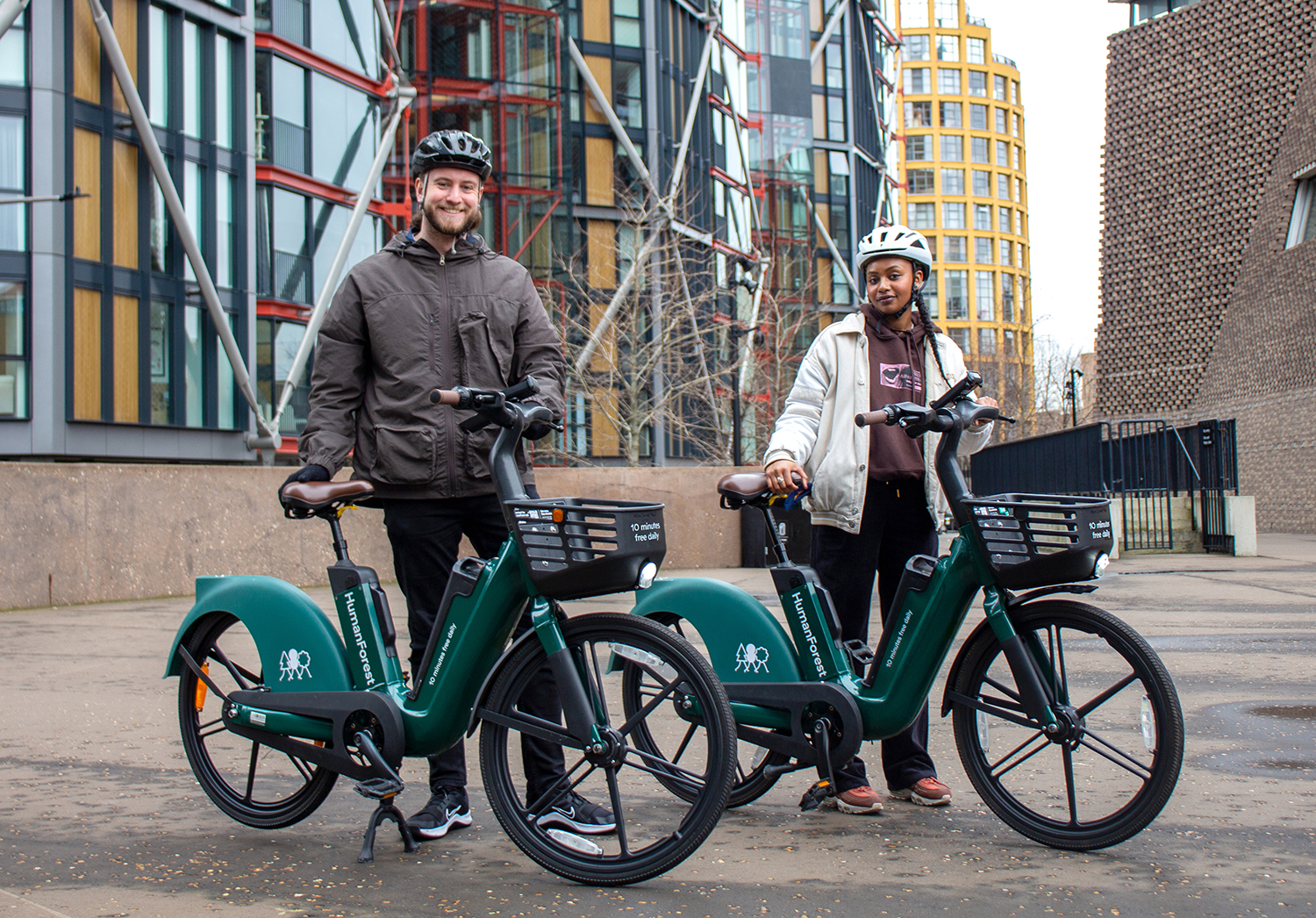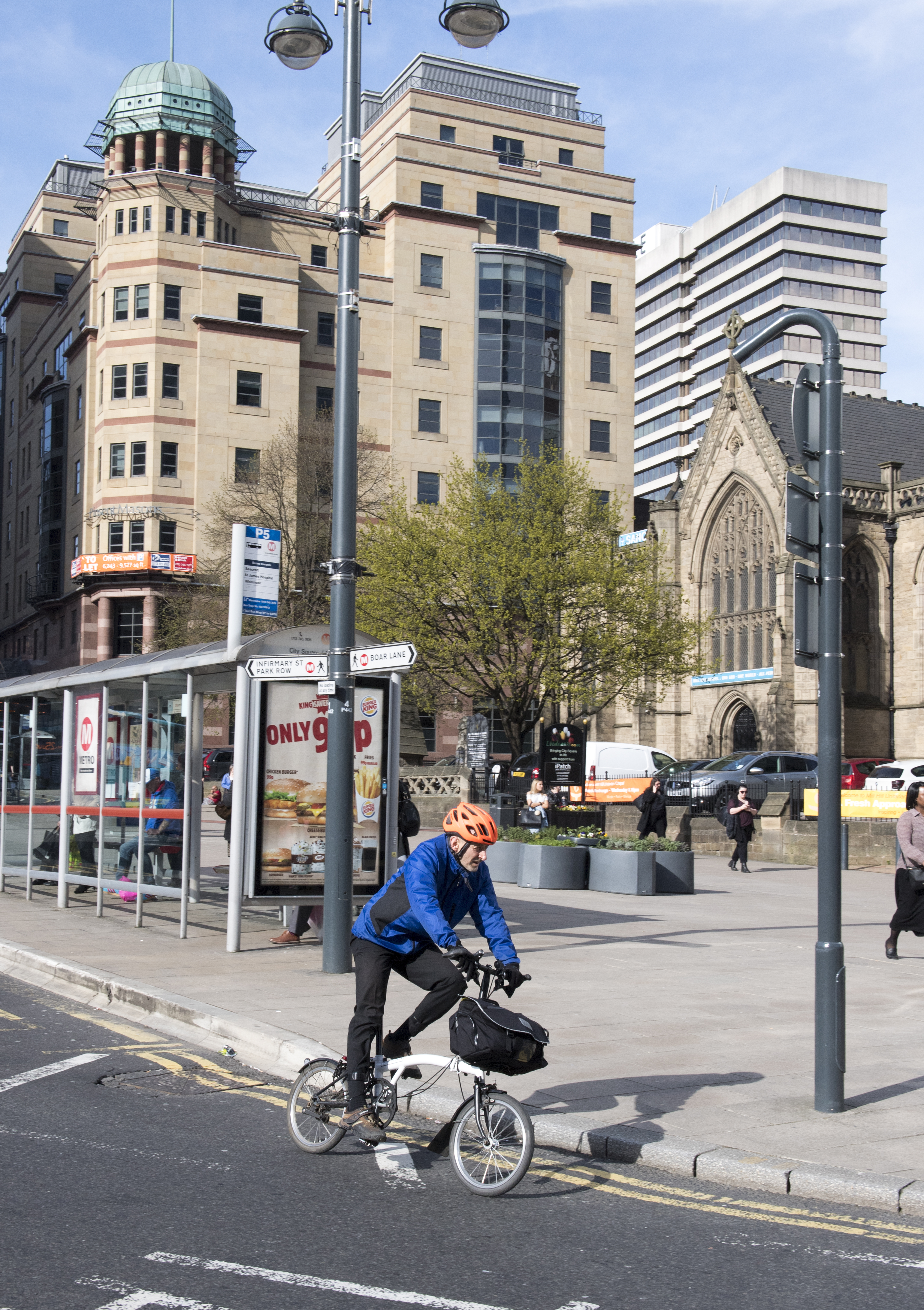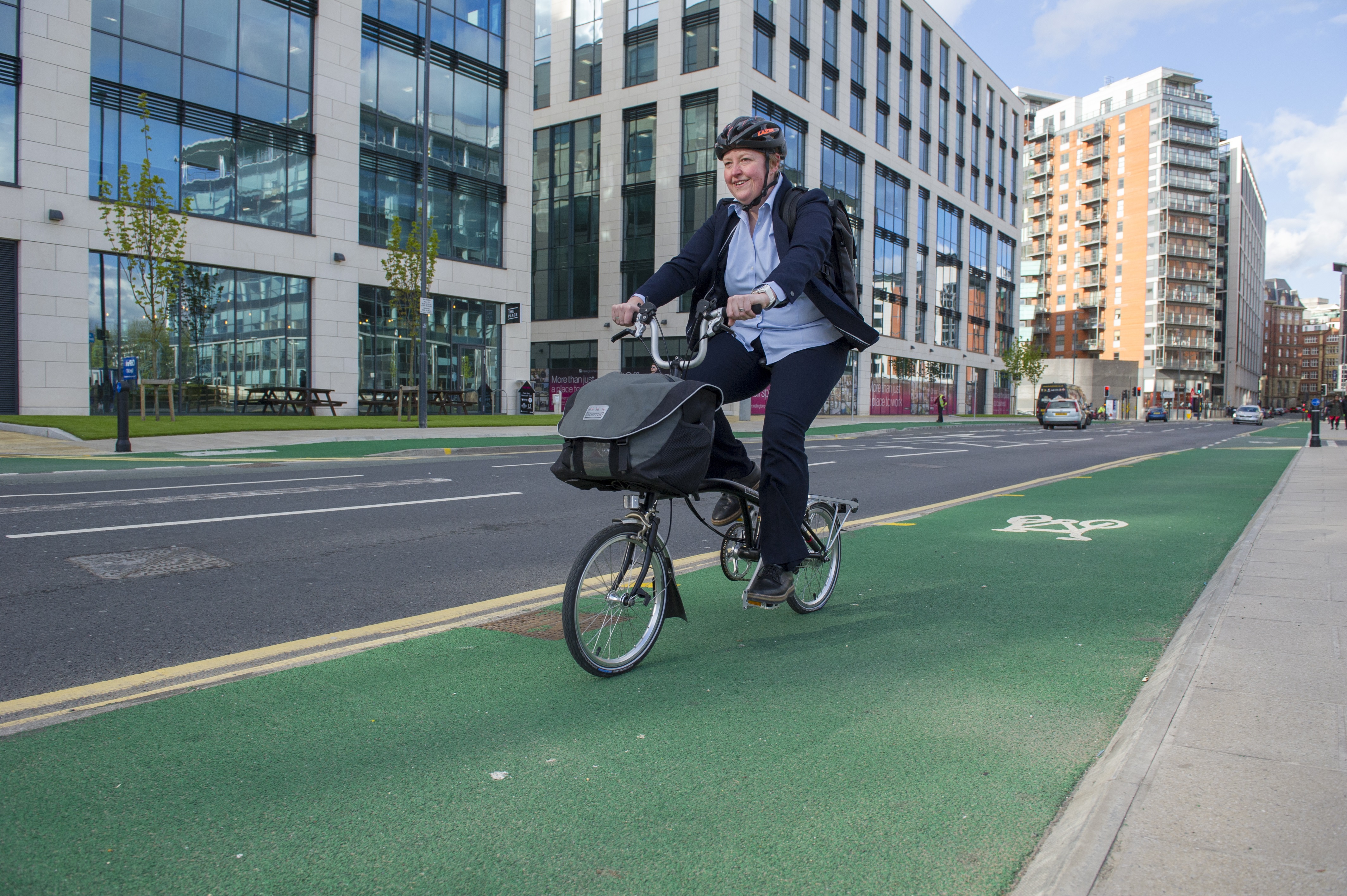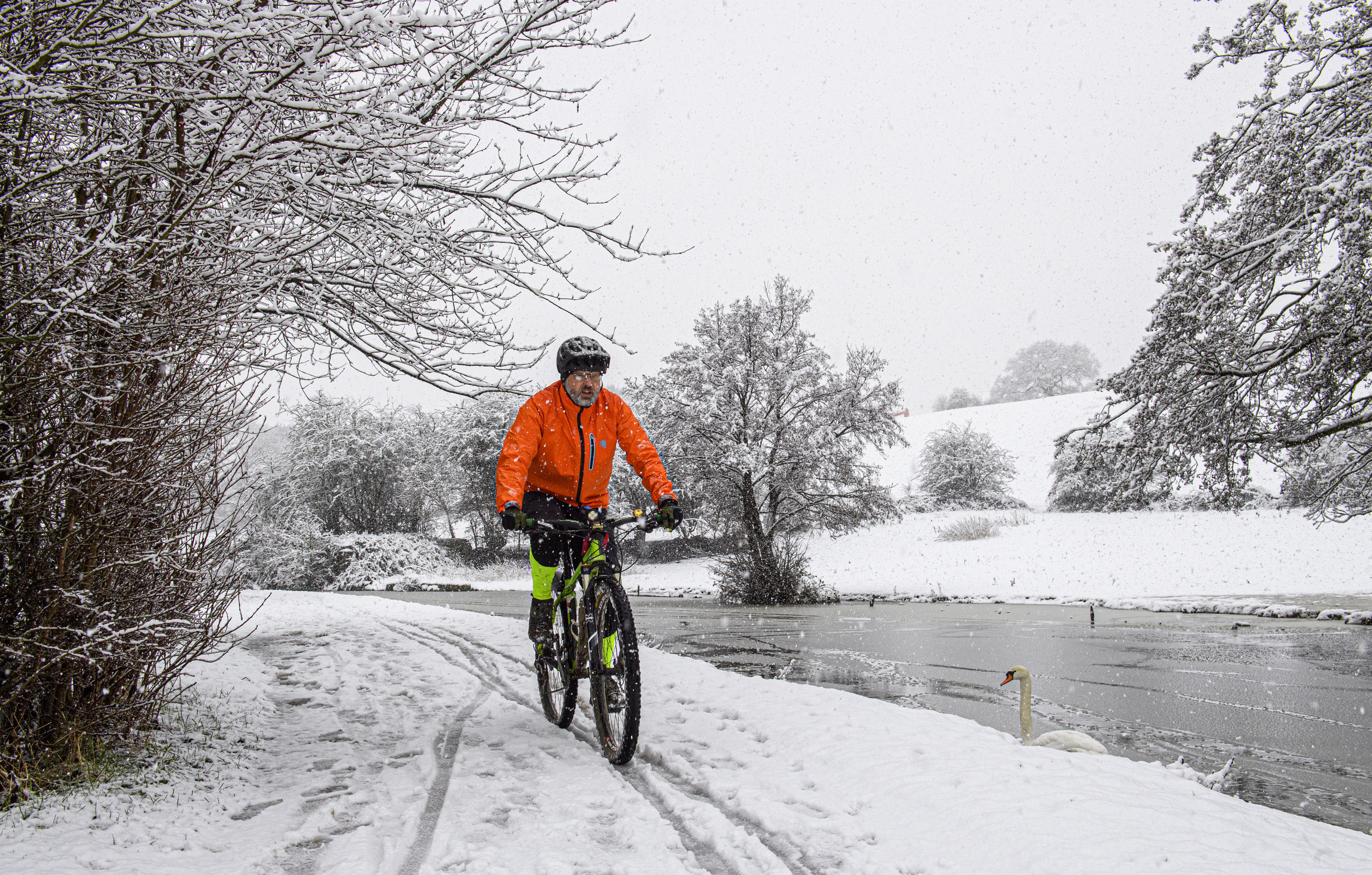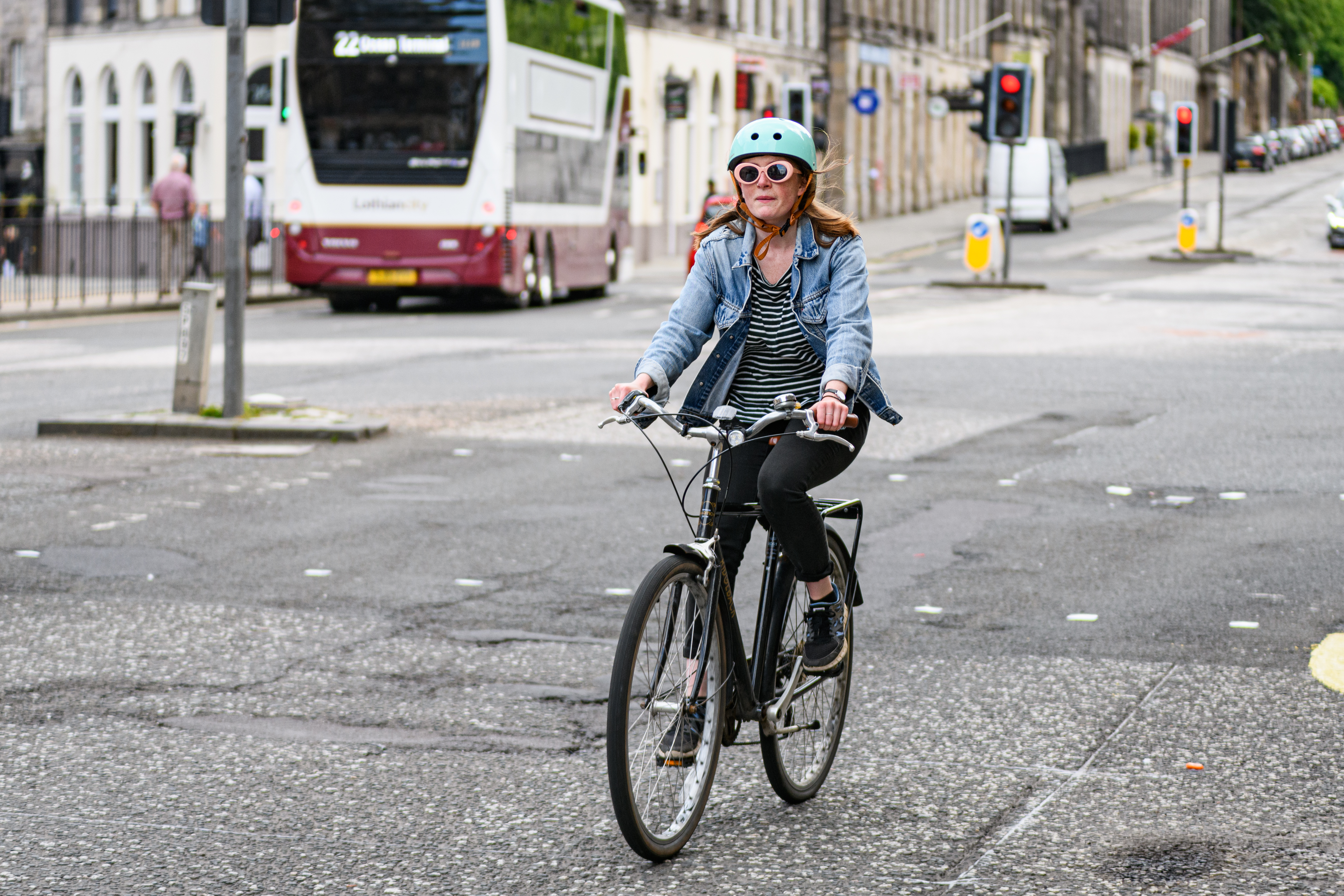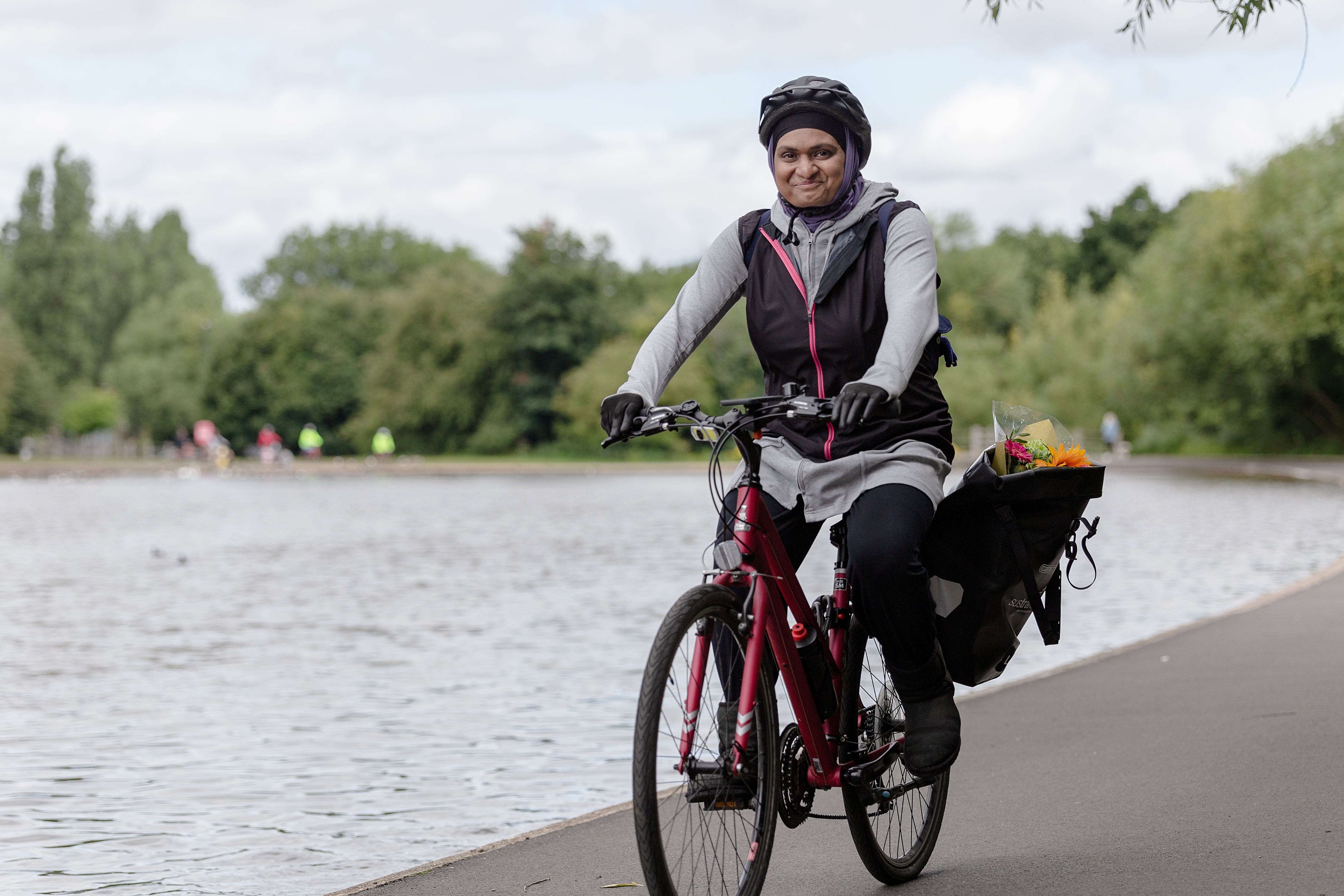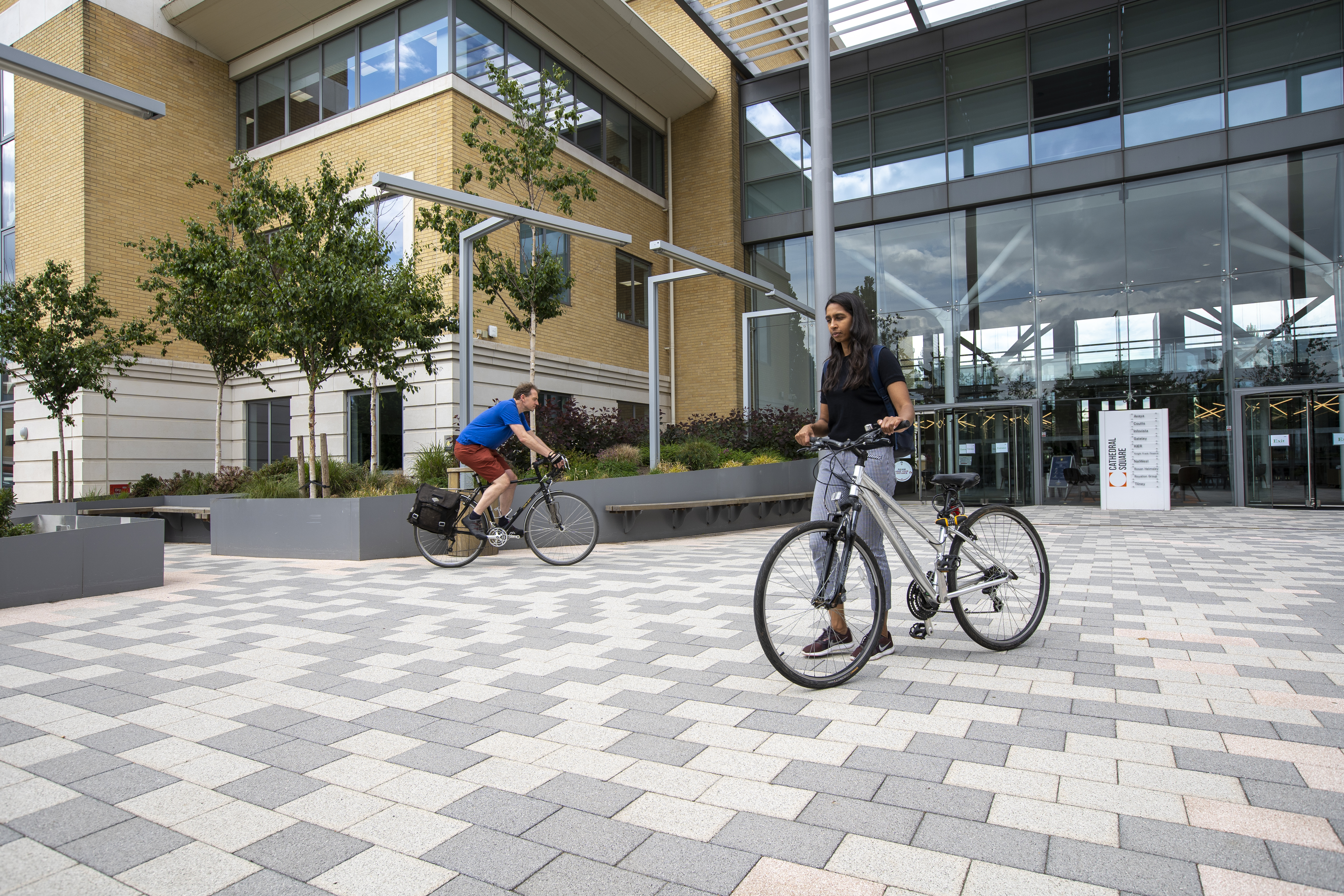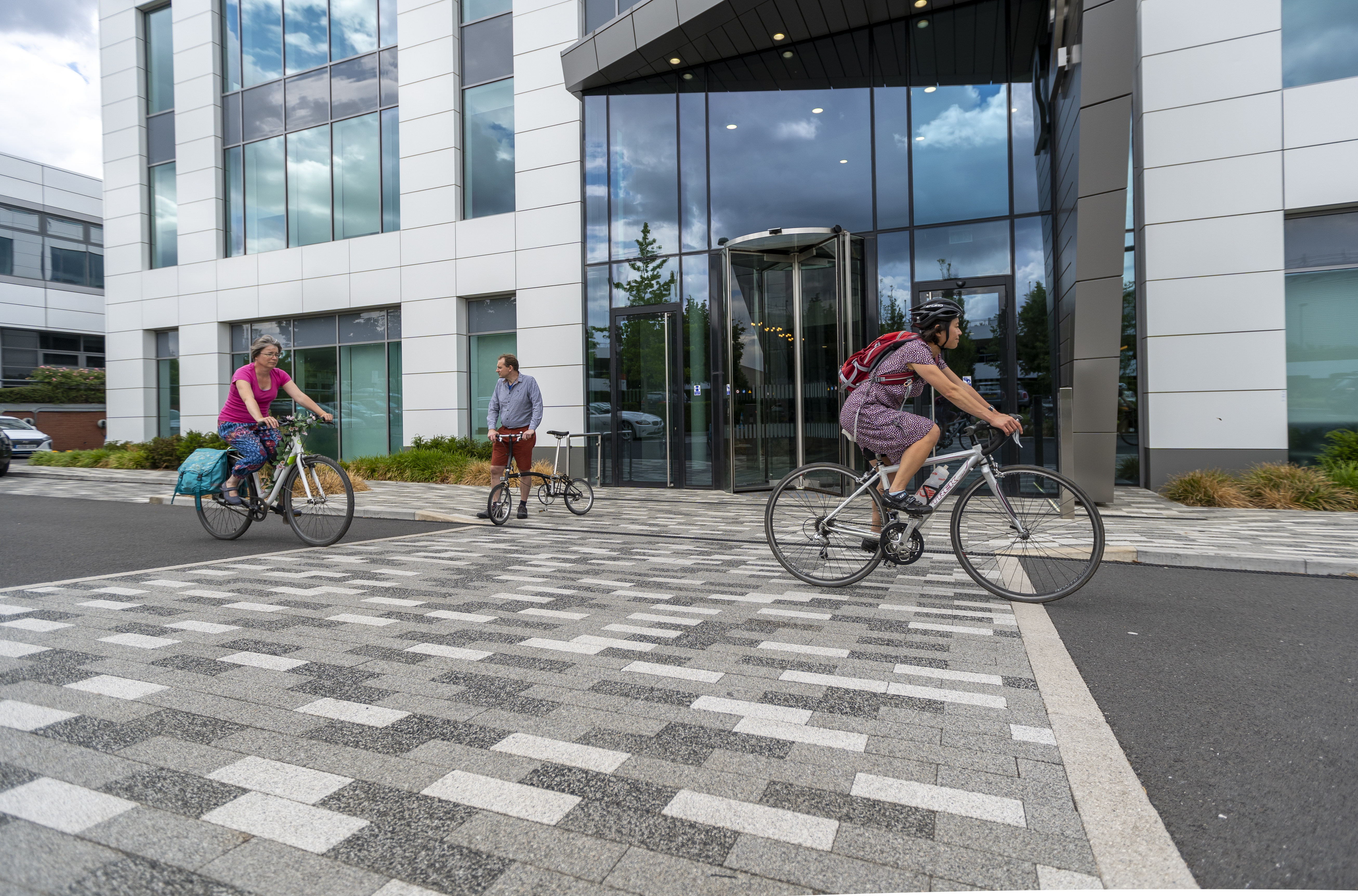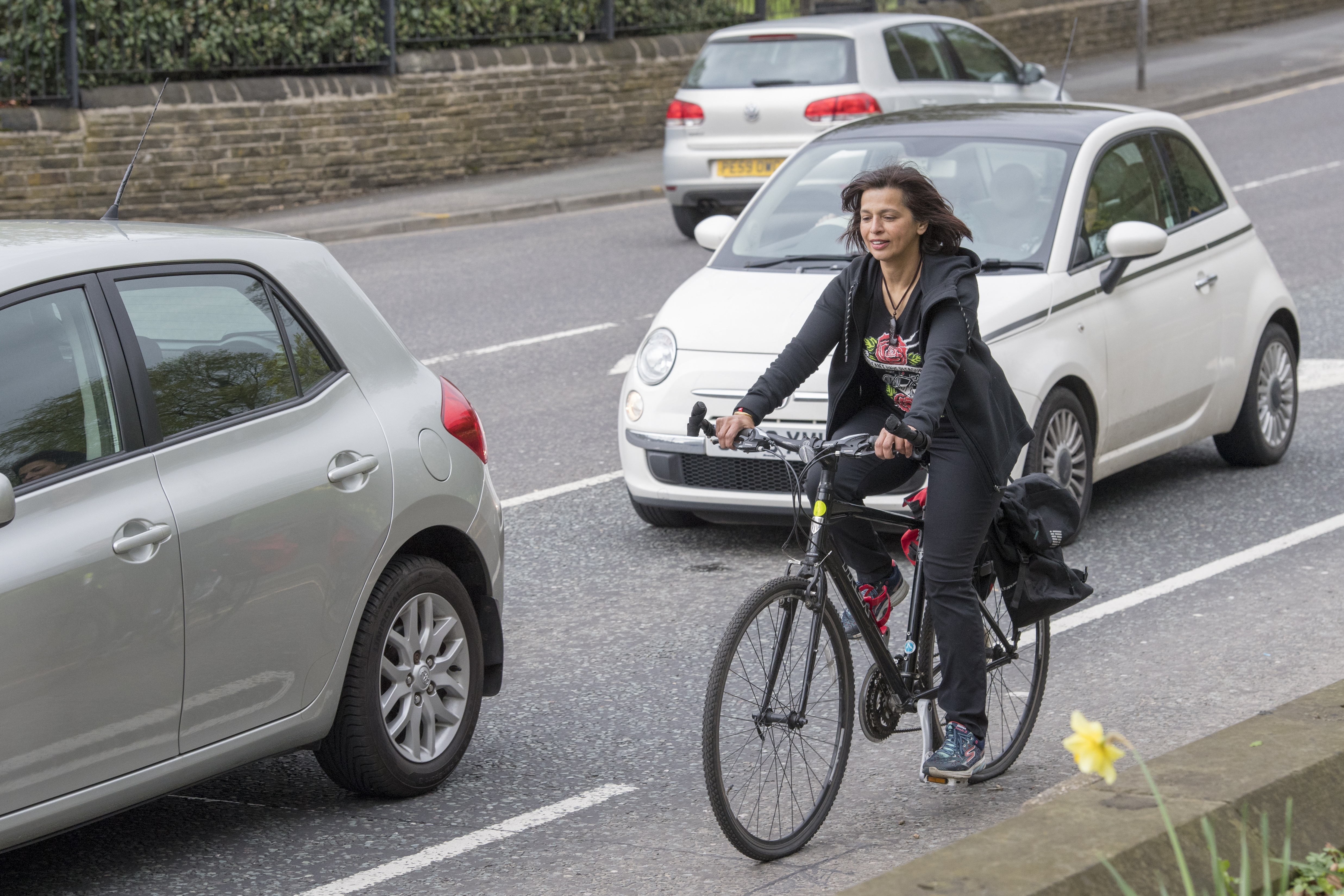How to look smart when cycling to work
With Cycle to Work Day just two weeks away, on 4 August, you might be thinking about swapping the car or bus for a cycle and riding to work. This annual celebration of the joys of cycling to work is now in its 10th year and has encouraged many thousands of commuters to get on their bikes.
We all know the benefits of cycling to work. You often arrive more quickly than other transport modes, you get fitter, less stressed and you save money. You’re also doing your bit for the environment.
But the thought of arriving at work a red-faced sweaty mess, with crumpled clothes and helmet hair, puts off many a potential cycle commuter. It doesn’t have to be that way, though. We have plenty of advice on how to cycle to work and still spend the day looking fresh and smart.
Stay fresh
If your employer has shower and changing facilities, then this part is easy. Keep some soap or shower gel, shampoo, wash cloth, towel and deodorant in a locker or desk drawer and shower when you get there.
Even without a shower, it’s possible to have a thorough wash standing at a sink – often referred to by cyclists as a bird bath – so long as it affords enough privacy. Toilet cubicles with a sink in and a locking door are your best bet.
If neither option is available, you can still clean up. Make sure you have wet wipes and deodorant on hand. At the very least you’ll want to wipe your face, armpits and groin area. Dry shampoo and a hairbrush will help keep your hair fresh, too. On the subject of hair, short styles or ponytails are the easiest to manage.
You can invest in a no-rinse body wash, which you just rub in and then towel off, without having to use water. One by Clean Life is available from Amazon.
What to wear
You have the choice of whether to cycle to work in your work clothes or carry them with you and change when you get there. This can depend on what facilities you have at work, how strenuous your journey is and even the weather.
If there’s a suitable changing area and space for storage, you could come in on a Monday by car or public transport with a week’s worth of clean clothes. This works well for those who have a particularly strict dress code or with a longer commute. It also gives your legs a bit of a break.
Some people choose to carry in their day’s clothing. For this you’ll need panniers or a rucksack. The former has the added advantages of keeping the extra weight on the bike rather than you and avoiding a sweaty back. But if you want that fancy road bike to double as a commuter cycle you’ll need a rucksack.
Lightweight clothes are best so as not to weigh you down too much. Modern fabrics are often crease resistant, while rolling up clothes rather than folding them will help cut down on creasing, too. And keep them at the top of whatever bag you use rather than shoving your lock, spare inner tube and lunch in on top of them.
Hanging up clothes when you get to work will also help get rid of any creases. A quick squirt with water, left to dry while you shower or clean up, will even keep suits and shirts fresh and wrinkle free.
But it’s perfectly possible to cycle in your smart gear. Looser-fitting clothes will allow the air to circulate, keeping you cooler. It’ll also make cycling a bit easier! Lighter clothing works better too.
This is even true in winter. Keep in mind that cycling warms you up, so don’t wear a thick, heavy coat – layering is key in the colder months. If you start to feel hot, stop, remove your top layer and stash it in your commuter bag.
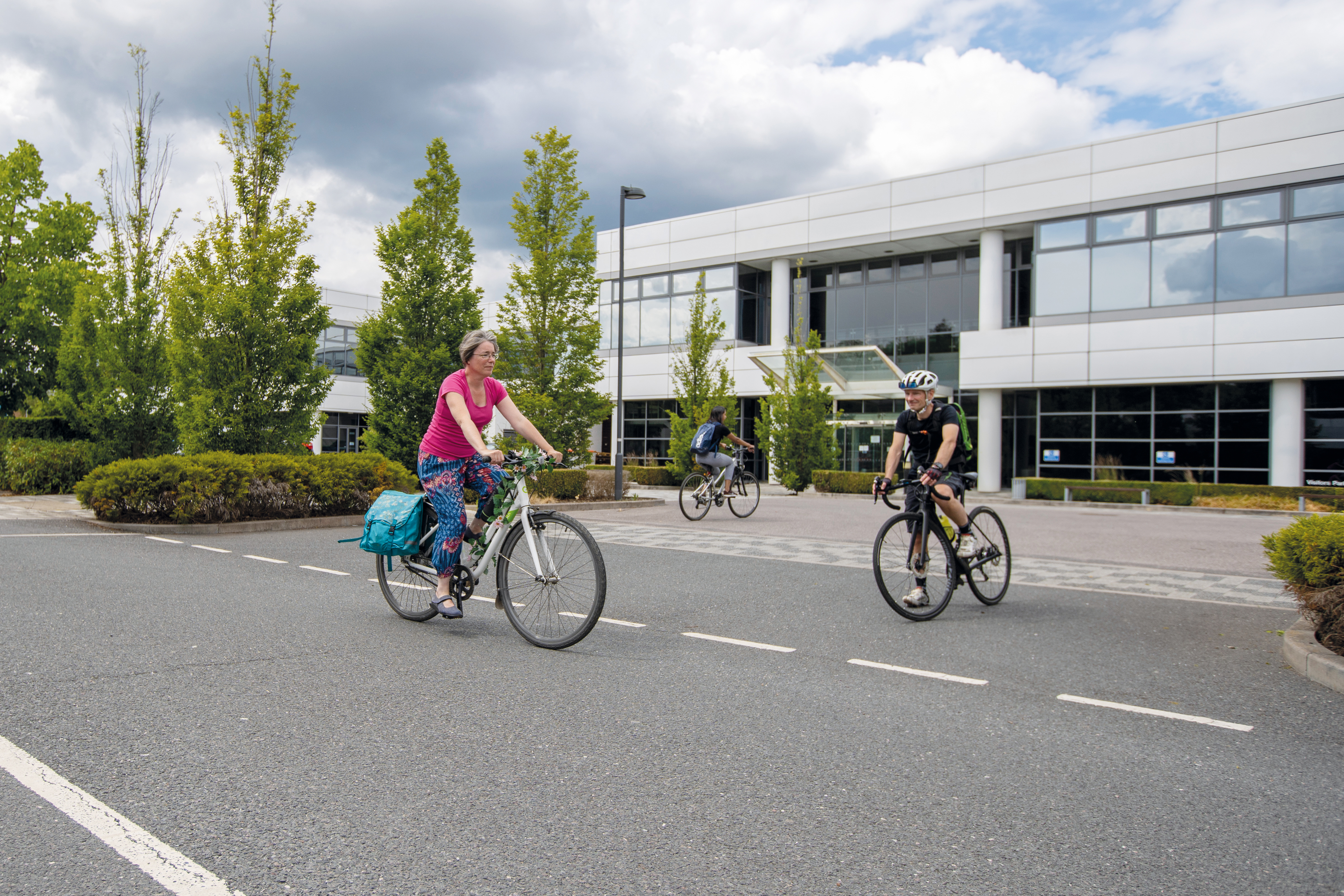
Investing in a lightweight, moisture-wicking base layer that you can remove on getting to work will help keep shirts and blouses fresh. A spare pair of underwear will give you something to change into if things get especially clammy.
Trousers with a bit of give in them are best. Jeans with some Lycra, for example, if jeans are considered suitable at your workplace. But even some smart trousers will have a bit of stretch, so try some out.
You’ll still want to freshen up when you arrive, so the same advice on hanging up the clothes you’ve just cycled in will help get rid of any creases and make you feel fresher during the day.
Waterproofs are essential if you’re going to be riding in your normal clothes. You really don’t want to spend the working day in a rain-drenched outfit. A rain cape will keep you covered. Waterproof overshoes will keep your toes warm and dry, too.
Similarly, a pair of sunglasses will protect your eyes from UV rays and flying grit. Ones with interchangeable lenses mean you can continue to use them in winter, which has the added benefit of keeping rain out your eyes.
You can cycle in any shoes you want. But an extra pair of socks rolled up in your bag and work shoes kept at your workstation, while cycling in lighter shoes with grippier soles, will keep you more comfortable both on and off the bike.
Skirting the issue
Cycling in a skirt presents its own problems, mostly to do with modesty and safety. You don’t want to be flashing your knickers at fellow commuters, and more importantly, you don’t want a skirt getting caught in your wheels or chain.
It’s generally best to avoid full-length skirts – opt for knee length or above. Minis work surprisingly well – they’re actually less likely to ride up and won’t get caught in your wheels or chain.
You can always wear shorts or leggings under your skirt, which can be taken off when you get to work. A pair of tights rolled up in your bag means you’ll stay smart. Bikie Girl Bloomers are eye-catching undershorts that you can wear under a skirt. The company is based in the US but it does ship to the UK.
There are two great tips for essentially converting your skirt to culottes for your ride. Penny In Yo’ Pants was devised by cycling enthusiast Johanna Holtan. All you need is a penny and an elastic band. We advise using a 2p piece, it’s heavier and bigger so easier to work with; don’t use a 50 pence piece as the corners will wear holes in your skirt.
Push the penny against the back of the skirt, through your legs to the front. It will now be wrapped in two layers of fabric; secure it with the elastic band. Watch the video – it’s much easier to understand how it works when you see it.
The second requires just a binder clip. Grab the back hem of your skirt through your legs, pull it through and up towards your thigh. Clip it in place using the binder clip.
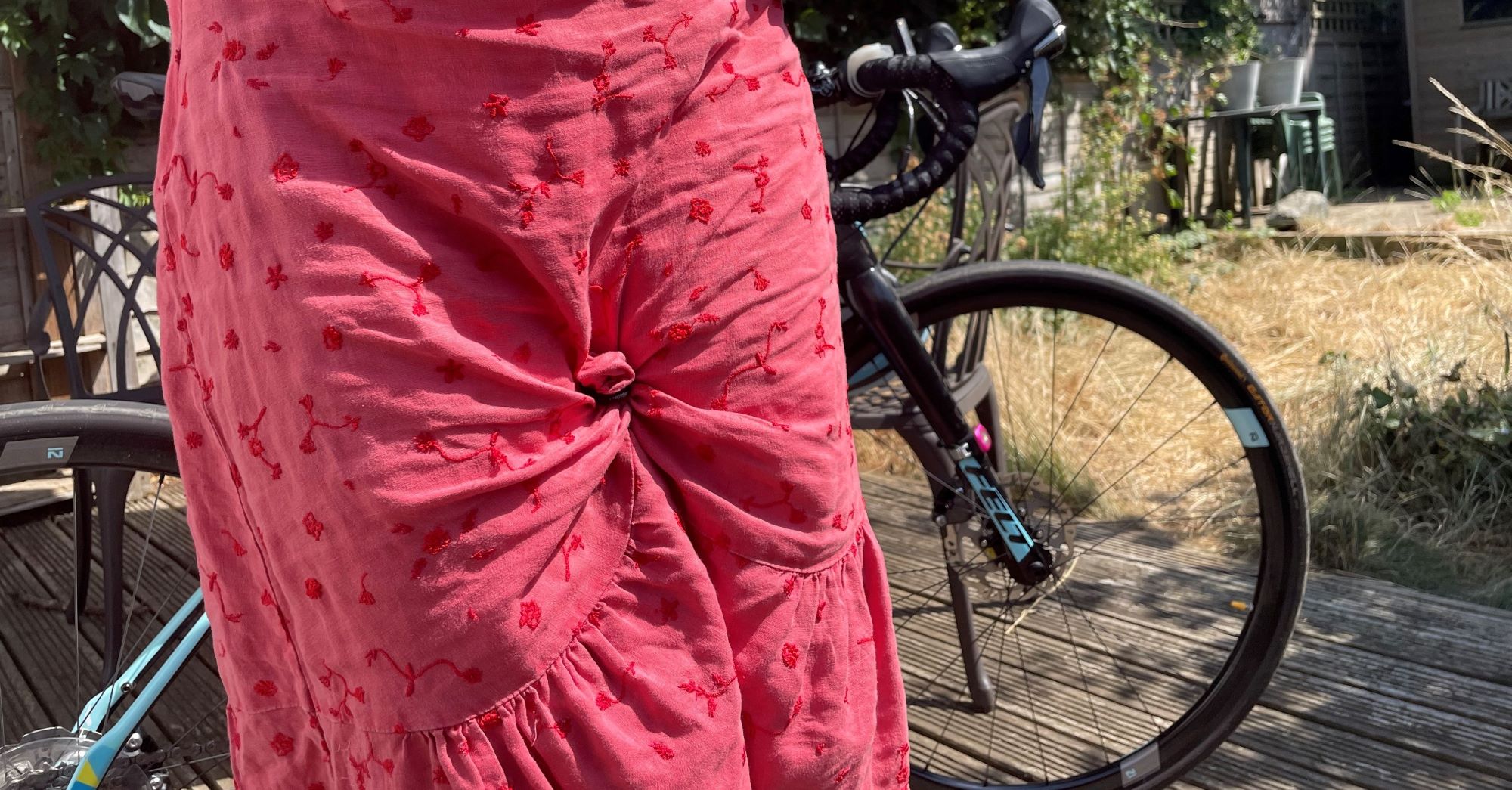
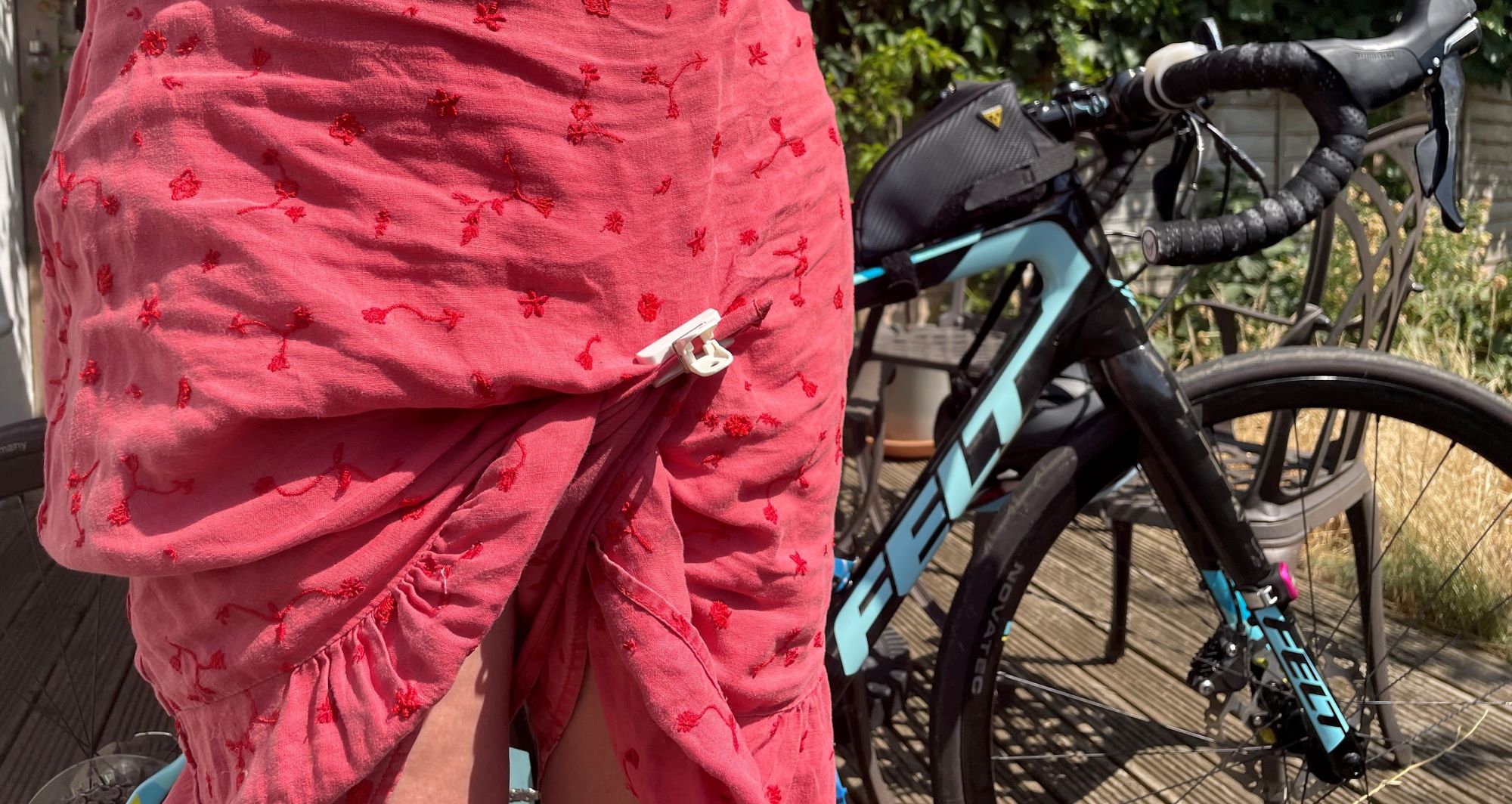
Plan your route
You can’t move the office closer to home, but with a bit of forward planning you can make the ride as easy as possible.
Plan your route in advance. Google Maps is the most accessible planner, but might not offer the best routes for cycling. Cycling UK’s Journey Planner allows you to choose the quietest route, while Komoot is a popular route finder with cyclists.
Use shortcuts, and avoid hills and rough terrain where possible. If you’re new to cycle commuting, ride the route at least once before you need to do it for work. This way you’ll be able to spot any potential problems without having the pressure of arriving on time.
We’ve got more tips for staying smart when cycling to work in the sidebar – and share any we’ve missed in the comments below.
Anyone who’s spent any time on public transport during rush hour knows that arriving at work flustered and dishevelled isn’t restricted to cyclists. In fact, you’re now ready to ride to the office and get there feeling happier, healthier and fresher than your Tube- or bus-using colleagues.
And if you need any more incentive to cycle, Cyclescheme, the organisation behind Cycle to Work Day, is offering prizes for those who sign up and cycle to work on 4 August.

